
All categories
Featured selections
Trade Assurance
Buyer Central
Help Center
Get the app
Become a supplier

(225 products available)
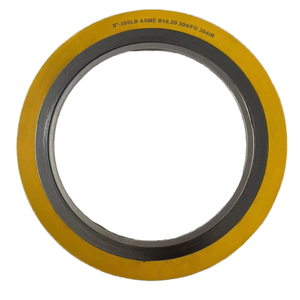












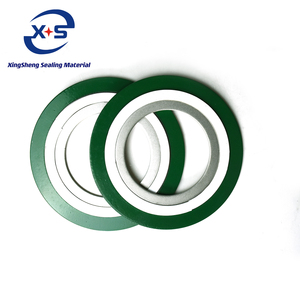
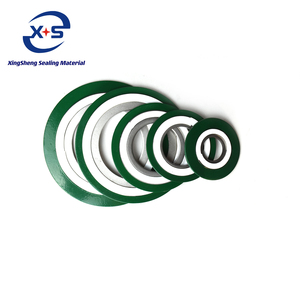











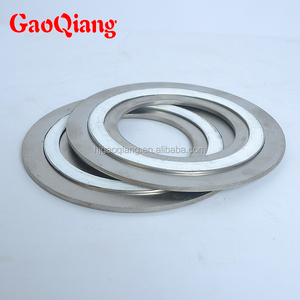
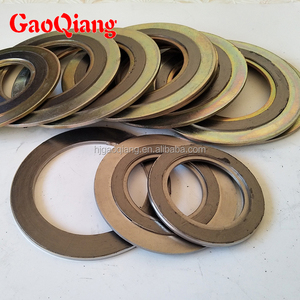







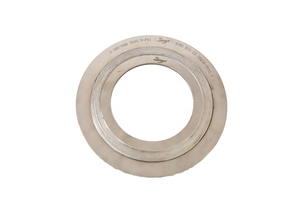


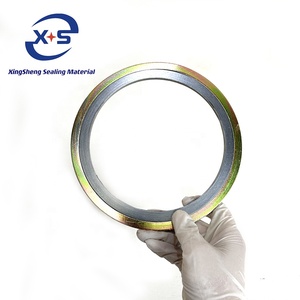
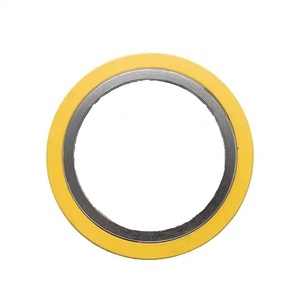


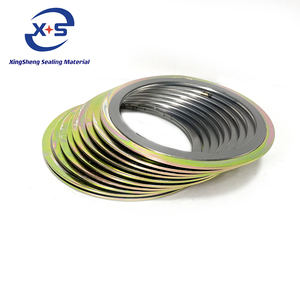

Duplex gaskets, found in contrasting fabrics, often feature a soft inner layer for better sealing and a tougher outer layer for support. It's essential to know the different types to ensure safety and longevity in your operations:
Metallic-infulated Duplex Gaskets
Known for outstanding performance in extreme conditions, these duplex gaskets are great for high-pressure and high-temperature settings. Their sturdy metallic layer makes them suitable for use in oil and gas, chemical processing, and power generation industries.
Ceramic Duplex Gaskets
Ceramic duplex gaskets can survive intense heat, making them a solid choice for industries where temperature control is vital. Their durable structure and resistance to thermal shocks increase operational safety in foundries and glassworks.
Rubber-coated Duplex Gaskets
Rubber-coated duplex gaskets provide an extra layer of protection against corrosion and chemical exposure. The flexible properties create a solid seal even on uneven surfaces. These gaskets are commonly used in water treatment facilities, pulp and paper mills, and wastewater management.
Graphite-filled Duplex Gaskets
These gaskets offer excellent chemical resistance and can handle elevated temperatures. Their unique composition not only provides a tighter seal but also enhances the gasket's longevity.
Spiral-wound Duplex Gaskets
These gaskets are made by combining metal and a softer sealing material within a duplex design. They are highly favored for their ability to maintain a strong seal even when faced with fluctuating temperatures and pressures. Frequently encountered in refineries, chemical plants, and power stations, these gaskets are renowned for their adaptability in diverse industrial settings.
PTFE-coated Duplex Gaskets
These are designed for industries where chemical exposure is a concern. The PTFE coating offers unmatched protection against a vast range of chemicals, ensuring the integrity of the gasket and the safety of the environment. Often seen in pharmaceutical plants, chemical storage facilities, and food processing units, these gaskets are a reliable solution for minimizing leakage and maximizing safety.
Chemical Industry
In a risk-prone chemical industry, duplex gaskets protect both machinery and personnel by creating a secure and long-lasting seal that stops dangerous leaks. Their mighty resistance to heat, pressure, and aggressive chemical interactions makes them ideal for reactors, pipelines, and tanks. When properly chosen and implemented, these gaskets cut downtime caused by repairs or part replacements and boost efficiency through its superb ability to keep processes running smoothly.
Oil and Gas Industry
Oil and gas operations often use duplex gaskets in pipeline, drilling, and refining processes. Under extreme pressures and temperatures, these gaskets offer great sealing capabilities. Being reliable means they are central to preventing leaks, ensuring safety, and protecting the environment.
Power generation industry
Duplex gaskets are widely used in power plants, including nuclear and renewable energy facilities. High-temperature applications require reliable sealing, and duplex gaskets deliver this without fail. Their durability reduces maintenance needs, running up efficiency.
Pulp and Paper Industry
In the pulp and paper industry, duplex gaskets protect machinery exposed to steam, chemicals, and varying pressures. They are a common solution for ensuring long-lasting reliability and minimal downtime in vital equipment, including digesters, washers, and dryers.
Aerospace and defence industry
Duplex gaskets in aerospace and defence offer reliable sealing in high-stakes environments. Their ability to work properly under extreme pressure and temperature variance makes them needed in critical systems. Its lightweight yet sturdy design forms a solid seal that improves performance and safety.
Marine industry
The demanding marine environment also incorporates duplex gaskets. They seal out air and water in critical engine and hull systems. Resistance to extreme temperature and pressure creates an ideal fit for variable marine environments. Duplex gaskets are essential to enhancing dependability.
Temperature and pressure resistance
Duplex gaskets come in handy for machines operating at high-pressure and high-temperature zones. Their unique build, with a soft inner layer and a tough outer layer, gives the support and seal needed under extreme conditions. Duplex gaskets deal with thermal expansion better than typical gaskets, preventing leaks in heat-variable environments.
Sealing material
Often, a duplex gasket's inner layer is constructed from a material with good compressibility, like rubber or foamed polyurethane. This layers helps the gasket mould into any imperfections in the surfaces it seals against, creating a tight, leak-proof seal. The outer layer is crafted from a sturdier substance like steel, providing the needed support and shielding the inner layer from any damage.
Resistance to corrosion
The duplex gaskets are suited for industries that use corrosive chemicals and gases. The materials used to create a duplex gasket pair are strong against corrosion, ensuring they last longer. The inner and outer layers are designed to resist various corrosion forms by using metals like titanium or alloys with exceptional anti-corrosive properties.
Customization and design flexibility
Duplex gaskets are available in various sizes, shapes, and thicknesses to meet any industry need. Their unique designs, in most cases, include reinforcement elements such as metal inserts or rings, boosting strength and preventing blowouts.
Compliance with industry standards
Often, duplex gaskets comply with internationally recognized standards on sealing solutions. Commonly, these standards come with guidelines concerning safety, environmental impact, and performance metrics. For example, the American Petroleum Institute (API) and the European Sealing Association (ESA) often test and approve these gaskets.
Routine Inspection
Schedule regular checks for any signs of wear and tear on gaskets. Look for cracks, swelling, or leaks that may indicate a need for repair or replacement. Early detection of minor issues can prevent larger problems down the line. Have a professional inspect the gaskets at least once a year.
Correct Installation
Be mindful when installing duplex gaskets as this is vital to their longevity. Make sure the surfaces are clean and free from any remnants or irregularities that could affect the seal. See to it the gasket is evenly compressed during installation - uneven pressure can lead to premature failure.
Proper Storage
Keep duplex gaskets in a temperate, dry location away from direct sunlight or harsh chemicals that might degrade the material. Ensure they are stored properly to prevent any distortion or damage before they are used. Save gaskets by making sure the environment where they sit isn’t hostile.
Avoid Parafinalia
Avoid using petroleum-based substances as they can harm the gasket material, leading to faster deterioration. Likewise, refrain from mixing different gasket materials, for instance, rubber with metal. Doing so will cause unknown reactions that could weaken the duplex structure; therefore, it should be left for the experts. Using duplex gaskets beyond their rated lifespan can compromise safety.
Temperature Gradients
Strong temperature differences can harm the seal between the duplex gasket and the surfaces. Check regularly for signs of thermal stress like cracking or loss of elasticity in the material. In case of excessive temperature variance, consider using an expansion joint.
A duplex gasket's role is to form a leakproof seal between two surfaces under varying temperatures and pressures. This makes it ideal for use in the chemical, oil, and gas industries, among others.
Duplex gaskets have an inner layer made from compressible material, often rubber. The outer layer, though, comprises a tougher substance such as stainless steel to give support during the sealing process.
Among the benefits are their ability to seal gases and liquids effectively, plus resistance to chemical corrosion. This makes them robust and versatile sealing options, especially in harsh environments.
Duplex gaskets are distinct from sandwich gaskets. The latter contains flexible packing between two metal plies, while duplex gaskets are designed with a single layer of material. This gives the duplex gasket a sharper edge in dual-purpose sealing capability.
Duplex gaskets are reusable, although this depends on the extent of wear and tear after first use. In some instances, it may require replacement after a few uses. Proper maintenance will prolong its lifespan.